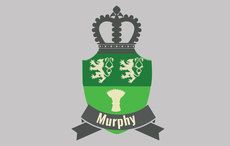The Irish Minister for Arts, Heritage and the Gaeltacht, Heather Humphreys TD today launched a new website containing details on the compensation given to individuals and businesses in the aftermath of the 1916 Easter Rising.
The site contains details of more than 6,500 compensation claims submitted to the Property Losses (Ireland) Committee because of the damage to buildings, and to property, sustained as a result of the fighting. They also detail the the loss of personal property, and damage caused by the fires and looting that ravaged Dublin city center as the fighting worsened.
Digitized by the National Archive of Ireland, the majority of claims were filed by persons in Dublin although there are a substantial amount of claim from Enniscorthy, Co. Wexford, and a number of claims from Co. Galway also. Although the events of the Dublin Rising are those that are most remembered and commemorated, smaller scale attempts at an uprising were made in Ashbourne, Co. Meath, Galway and Enniscorthy.
The majority of the claims made in Dublin were from individuals in the city who had personal effects located in the main areas of fighting which were lost or destroyed. These ranged from the possessions of chamber maids working in hotels on Sackville St (O’Connell St) to pieces of jewelry that had been left in local jewelry shops to be repaired.
Speaking at the website launch earlier today, Minister Humphreys referenced the very personal cost of the Rising for Dublin City citizens.
“As well as the lives lost during Easter Week 1916, many businesses were damaged or destroyed,” she said.
“These files go into incredible detail, listing the individual stock items lost by businesses during the Rising and providing us with a window into the homes of 1916, as people claimed for personal effects, both small and large.”
Among the interesting claims submitted are those of renowned Irish artists Jack B. Yeats and Sir John Lavery whose works were destroyed while on display in the Royal Hibernian Academy on Abbey Street Lower. The Academy building was completely destroyed in the Rising.
“These compensation files illustrate the devastating impact of the Rising on Dublin city centre. Dublin was a city in flames, with hundreds of lives lost and many buildings and homes destroyed,” continued Minister Humphreys.
“In the aftermath of the Rising, as the political and social landscape continued to change, the families and business people of the city had to pick up the pieces and get on with their lives in what was soon to become an utterly changed Ireland.”
The Property Losses (Ireland) Committee (PLIC) was established in June 1916 to assess claims for damages to buildings and property as a result of the destruction caused by the 1916 Rising.
The Committee grew out of the Dublin Fire and Property Losses Association, led by well-known businessman William Martin Murphy, who began placing pressure on the Irish Parliamentary Party and the British government from May 1916 onwards to provide compensation to those who had lost their business or property and to provide for the associated costs of rebuilding in the wake of the Rising.
The claims now provide us with an interesting perspective of the political and social history of Dublin in the early years of the 20th century, from the claim by Lizzie Walsh, a chambermaid in the Metropole Hotel who complains that the amount of the award she has been granted is insufficient to purchase a new uniform, which will prevent her from obtaining a new job, to the claim of Hanna Sheehy Skeffington, widow of Francis Sheehy Skeffington, which provides details of the raid on her house in Grosvenor Place, Rathmines.
The collection can be viewed here.




Comments